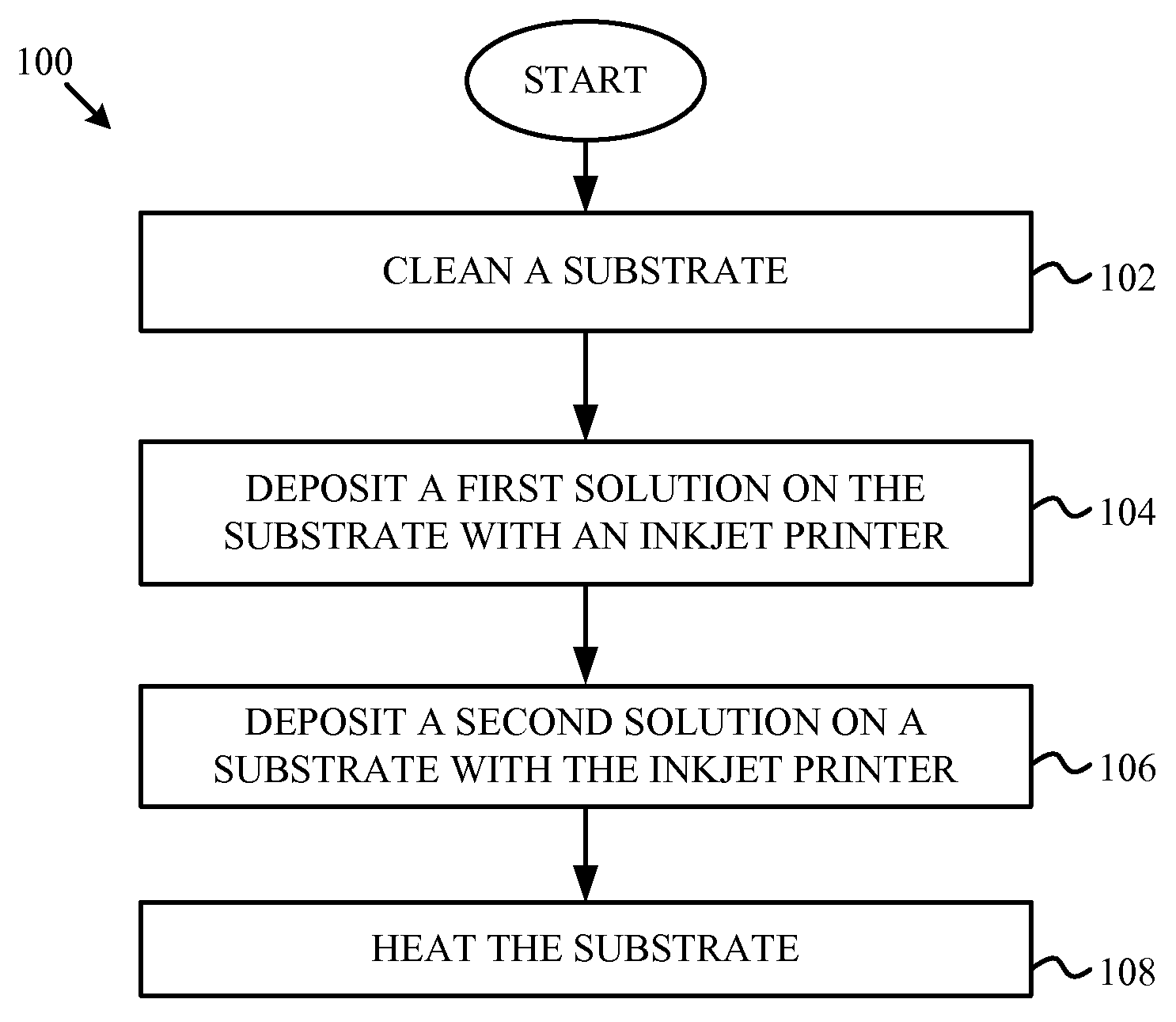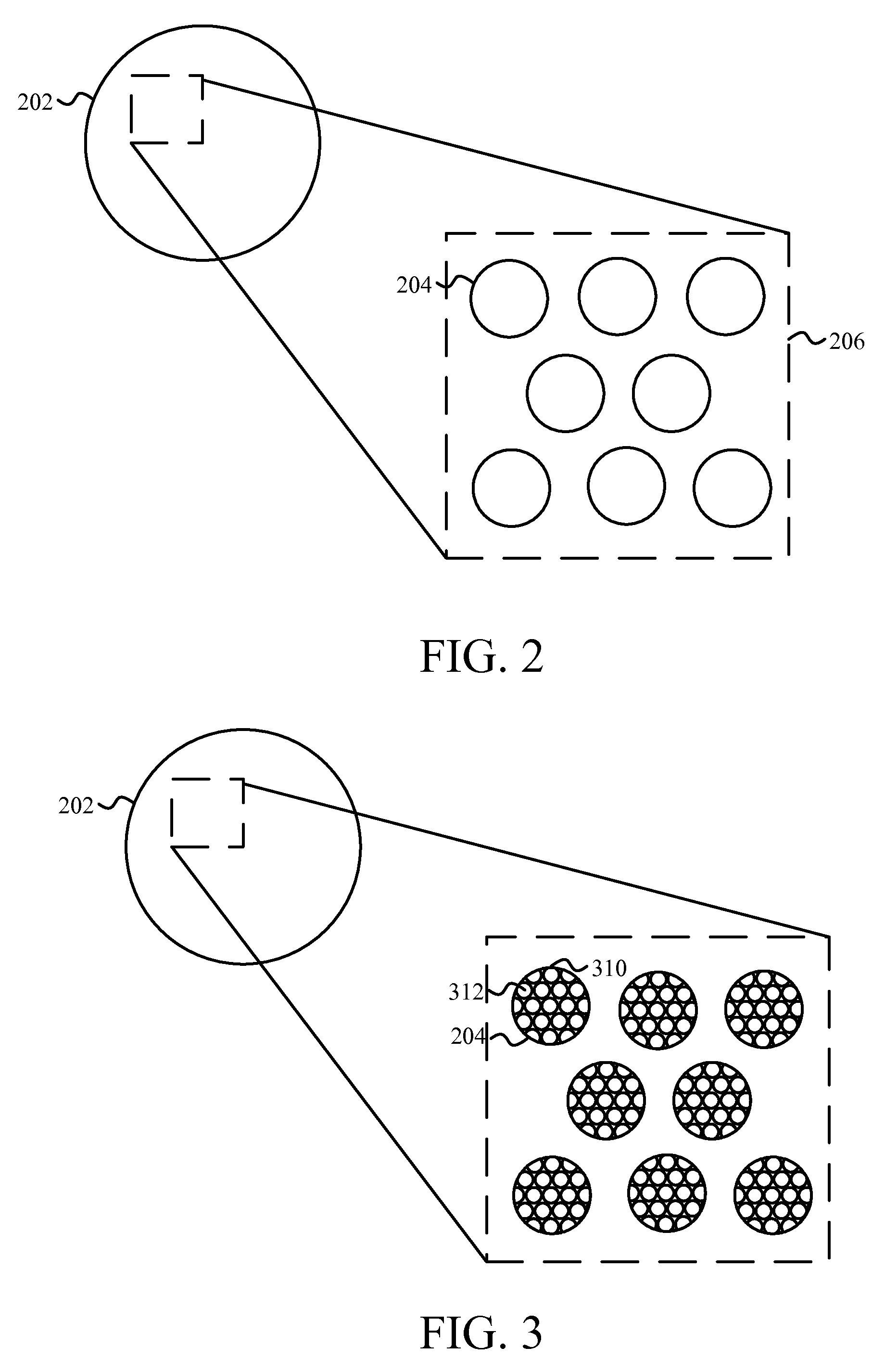In situ synthesis of nanoparticles on substrates by inkjet printing
a nanoparticle and substrate technology, applied in the field of printing, can solve the problems of reducing throughput, low yield of nanoparticles with the desired, and high cost of pvd process operation, so as to improve the control of the deposition pattern and reduce cost
- Summary
- Abstract
- Description
- Claims
- Application Information
AI Technical Summary
Benefits of technology
Problems solved by technology
Method used
Image
Examples
Embodiment Construction
[0017]FIG. 1 is a flow chart illustrating a method 100 for depositing nanoparticles on a substrate with inkjet printing according to one embodiment of the disclosure. Method 100 begins at block 102 with cleaning a substrate. The substrate may be one of rigid or flexible substrates, such as silicon, glass, indium tin oxide (ITO), metal, textile, paper, and polyimide. The substrate may also be a combination of these materials and / or similar materials, such as a substrate having a silicon oxide layer deposited on a silicon base. Cleaning the substrate may include one or more of rinsing the substrate with water, drying the substrate, rinsing with substrate in ethanol with ultrasonic agitation, rinsing the substrate in acetone with ultrasonic agitation, rinsing the substrate in isopropanol alcohol with ultrasonic agitation, and drying the substrate.
[0018]At block 104, a first solution is deposited on the substrate with an inkjet printer. The inkjet printer may be a piezoelectric drop-on-...
PUM
| Property | Measurement | Unit |
|---|---|---|
| temperatures | aaaaa | aaaaa |
| temperatures | aaaaa | aaaaa |
| diameter | aaaaa | aaaaa |
Abstract
Description
Claims
Application Information
 Login to View More
Login to View More - R&D
- Intellectual Property
- Life Sciences
- Materials
- Tech Scout
- Unparalleled Data Quality
- Higher Quality Content
- 60% Fewer Hallucinations
Browse by: Latest US Patents, China's latest patents, Technical Efficacy Thesaurus, Application Domain, Technology Topic, Popular Technical Reports.
© 2025 PatSnap. All rights reserved.Legal|Privacy policy|Modern Slavery Act Transparency Statement|Sitemap|About US| Contact US: help@patsnap.com



